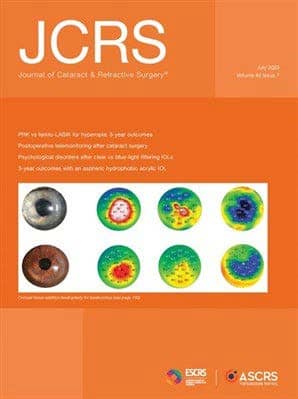
Keratoplasty Procedures for Keratoconus Patients
With decades of experience, the team of experts at CLEI understands the many challenges keratoconus patients face as they strive to find a treatment that will result in clear vision. This is especially true for patients with advanced keratoconus. For years, the go-to treatment option for advanced keratoconus was keratoplasty, or a corneal transplant. However, corneal transplantation comes with its own set of challenges.
During a penetrating keratoplasty (full thickness corneal transplant), the central cornea is removed from top to bottom, and replaced with fresh, donated corneal tissue. In more recent years, rather than replacement of the entire cornea, lamellar keratoplasty (DALK) allows for the use of specific layers of cornea tissue, focusing on the specific area of disease. For keratoconus patients, deep anterior lamellar keratoplasty (DALK) is performed to remove only the diseased top layer of the cornea.
In general, cornea transplants carry important risks that should be weighed carefully. For example, the eye must be monitored closely for graft rejection. The day after surgery, patients start using medicated eye drops, which they may need to use for at least six months, and in certain cases longer to prevent rejection of the transplant. Stitches may remain in the cornea for several months to several years in some cases as well.
With subspecialty fellowship training in corneal surgery and years of transplantation experience, transplantation success using these methods is certainly possible, especially for keratoconus patients. In fact, it’s worth noting that keratoconus has one of the best prognosis for good vision after keratoplasty according to many short- and long-term single-center studies, such as this one, which reports a greater than 90% chance of a clear graft.
Still, our team of experts believe there is always room for innovation and improvement on current treatment techniques. It’s the reason the CTAK procedure came into existence.
Advancing Keratoconus Treatment with CTAK
CTAK is a novel keratoplasty technique that has some unique benefits. Instead of replacing corneal tissue, preserved, sterilized corneal tissue (custom cut and placed to fit the individual’s unique corneal topography) is added to the eye to reshape the cornea. CLEI invented this groundbreaking procedure and began clinical trials in 2016 with some outstanding results. How does it compare to a traditional keratoplasty procedure?
Fewer Potential Complications
CTAK is a less invasive alternative that, in many cases, can improve visual acuity and corneal topography. CTAK uses tissue that has been frozen and then gamma-irradiated. The process eliminates donor cells and leaves behind only the collagen lamellae of the cornea to use as an inlay. In fact, the patient’s own cornea cells have been shown to repopulate this tissue over time. This means that the chance of rejection is highly unlikely.
Faster Recovery Period
With traditional keratoplasty, the recovery period is variable, but it can be lengthy. After surgery, vision returns very gradually in most cases. Some patients may enjoy improved vision relatively quickly – in just a few weeks time. For others, the process can take up to a year. With CTAK, most patients see improved vision within the first week. Usually, there are no sutures required from the CTAK procedure.
Ability to Treat Steep Corneas
CTAK is ideal for keratoconus patients, even in advanced stages, thanks to the customized tissue inlay. It allows us to treat thinner, steeper corneas, and modulate the amount of flattening we want to induce. The procedure can bring a patient’s cornea thickness and steepness back into an appropriate range for other keratoconus procedures, making overall keratoconus management more effective.
Better Use of Donated Tissue
CTAK tissue is made from tissue that is not used for other types of transplants. If not for CTAK, the tissue would be discarded. CTAK extends the gift of donations greatly in this manner.
Reversibility
CTAK is completely reversible. If it becomes necessary, the inlay can be removed or replaced with relative ease. Full and partial corneal transplants are permanent, with limited options for modification or reversal.
Of course, it’s worth noting that penetrating keratoplasty or deep anterior lamellar keratoplasty may be necessary in advanced cases of keratoconus, especially when visually significant central scarring is present. However, CTAK is an exceptional alternative for many patients.
CTAK Outcomes

CTAK has proven highly effective at improving patients’ visual acuity. During our clinical trials, patients saw an average improvement in uncorrected vision (without glasses) by about 5 logMAR lines and vision in glasses by over 3 logMAR lines. Their glasses prescriptions improved too. On average their prescriptions went from -6.25 diopters to -1.61 diopters. Topographic analysis showed significant flattening of the cornea as well, with an average decrease of -8.4 D in Kmean and -6.9 D in Kmax 6 months after surgery.
CTAK was featured on the cover of the Journal of Cataract and Refractive Surgery in July 2023. The cover image shows the customization of each CTAK tissue inlay. In the top image, CTAK was customized to address severe keratoconus while in the bottom image it was customized to address mild keratoconus.
The Future of CTAK
As the field of corneal transplantation continues to evolve, the CTAK procedure represents a significant step forward in the management of keratoconus and other corneal disorders. By offering a less invasive alternative to traditional corneal transplantation, CTAK has the potential to improve the lives of countless individuals living with these challenging eye conditions.
Looking to the future, the continued refinement and optimization of the CTAK technique, coupled with advancements in corneal imaging and surgical technologies, may lead to even more innovative and effective approaches to corneal tissue addition and replacement. As CLEI’s researchers and clinicians work to push the boundaries of what is possible in corneal transplantation, the promise of CTAK and other emerging treatments offers hope for a brighter, clearer future for those affected by keratoconus and other corneal diseases.
If you or a loved one are living with keratoconus or other corneal conditions, it’s time to explore the revolutionary potential of Corneal Tissue Addition Keratoplasty (CTAK). To learn more about this cutting-edge procedure and how it can benefit you, schedule a consultation with us today. Take the first step towards reclaiming your visual freedom and experiencing the world with renewed clarity.





